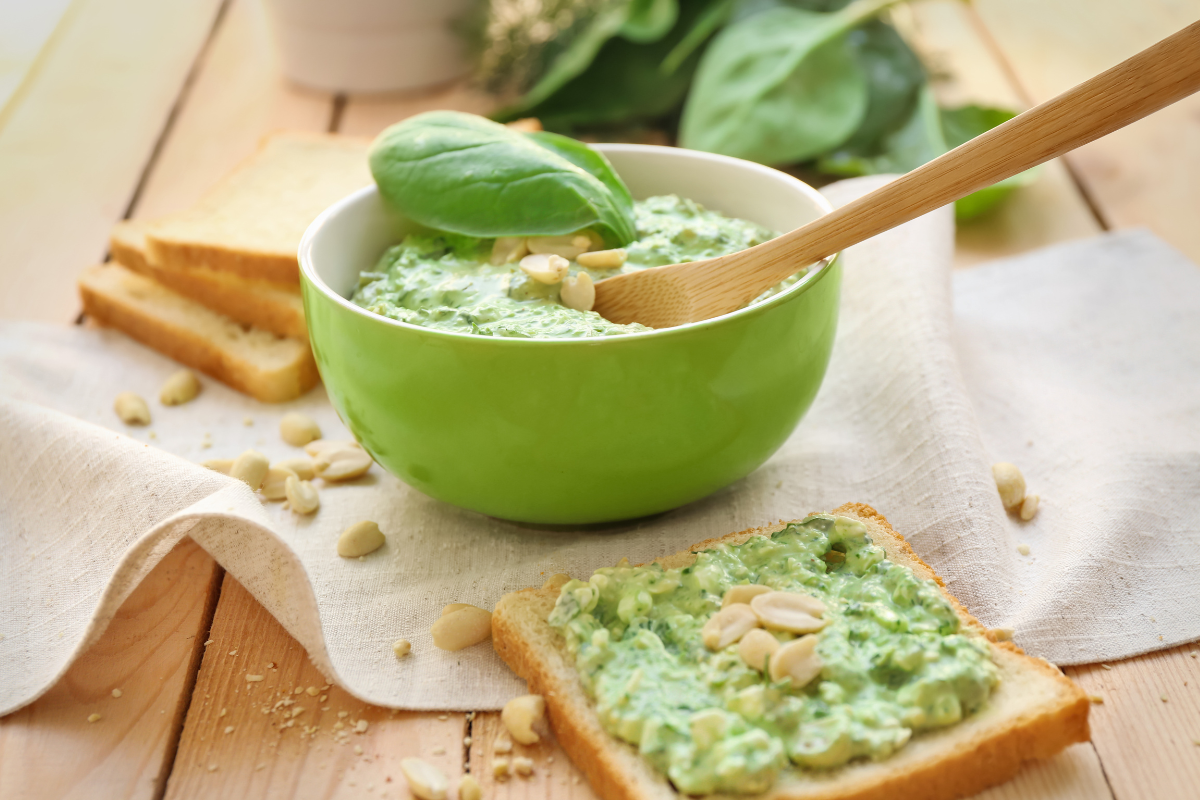Introduction to Using Canned Spinach in Dips
Overview of Canned Spinach vs. Fresh or Frozen in Dips
When it comes to making dips, spinach is a popular choice due to its rich flavor and nutritional profile. Canned spinach, often more accessible and longer-lasting than its fresh or frozen counterparts, provides a convenient option. While fresh spinach offers a bright, vibrant flavor and frozen spinach maintains a closer texture to fresh, canned spinach is pre-cooked and softer, which can be beneficial for smoother dips. However, it’s essential to consider that the canning process may alter the taste and texture compared to fresh or frozen spinach. Choosing between canned, fresh, or frozen spinach for your dip depends on your preference for convenience, texture, and flavor intensity in the final dish.
Benefits and Drawbacks of Using Canned Spinach
Benefits:
- Convenience: Canned spinach is ready to use, eliminating the need for washing, chopping, or cooking, which is ideal for quick meal preparation.
- Shelf Life: Canned spinach has a much longer shelf life than fresh or frozen, reducing food waste and ensuring you always have spinach on hand.
- Cost-Effective: Often more affordable than fresh spinach, canned spinach can be a budget-friendly option for those looking to incorporate greens into their meals.
Drawbacks:
- Nutritional Differences: The canning process may reduce some of the vitamins in spinach, particularly water-soluble ones like vitamin C.
- Flavor and Texture: Canned spinach typically has a softer texture and a more muted flavor than fresh or frozen spinach, which might not be preferable for all recipes.
- Sodium Content: Many canned vegetables contain added salt for preservation, which can increase the sodium content of your dish unless you choose a no-salt-added variety.
Understanding these aspects will help you make an informed decision on whether canned spinach is the right choice for your next dip recipe.
 How to Prepare Canned Spinach for Dips
How to Prepare Canned Spinach for Dips
Steps to Properly Drain and Prepare Canned Spinach
Preparing canned spinach correctly is crucial to ensure your dip has the best possible texture and flavor. Here’s how you can prepare canned spinach for your dips:
- Draining: Begin by opening the can and draining the liquid. You can do this by pressing the lid down over the spinach after opening and pouring out the excess water. For a more thorough drain, empty the spinach into a colander and press down with a spoon or spatula to squeeze out the liquid.
- Rinsing: To reduce the sodium content and any potential canned taste, rinse the spinach under cold water. This step is especially important if you’re using a brand that includes added salt.
- Squeezing Out Water: After rinsing, take handfuls of spinach and squeeze out the water. You can also wrap the spinach in a clean kitchen towel or cheesecloth and twist it to wring out the moisture. This step is vital to prevent your dip from becoming watery.
- Chopping: If the canned spinach is the whole leaf, you might want to chop it to ensure a consistent texture throughout the dip. Use a sharp knife to cut the spinach to your desired size.
- Pre-cooking: Though canned spinach is pre-cooked, a quick sauté with some garlic or onions can enhance its flavor before adding it to the dip mix.
Enhancing the Flavor of Canned Spinach for Dips
Canned spinach can sometimes have a bland or overly “canned” taste. Here are ways to enhance its flavor for your dips:
- Seasoning: Don’t hesitate to add herbs and spices. Garlic powder, onion powder, nutmeg, and black pepper can significantly enhance the spinach’s flavor.
- Sautéing: Briefly sautéing the spinach with aromatics like garlic or shallots can introduce depth and complexity to its taste.
- Mixing with Flavors: Combine the spinach with ingredients that have strong flavors, such as feta cheese, artichokes, or sun-dried tomatoes, to create a more flavorful dip.
- Acidic Touch: A splash of lemon juice or vinegar can brighten up the dip and reduce the flatness of the canned taste.
By following these steps and tips, you can significantly improve the texture and flavor of canned spinach, making it a delicious component of your dip.
Nutritional Aspects of Canned Spinach
Nutritional Comparison Between Canned and Fresh/Frozen Spinach
When comparing the nutritional value of canned spinach to its fresh or frozen counterparts, several factors come into play. Fresh spinach typically offers the highest levels of vitamins, especially vitamin C, which is sensitive to heat and can diminish during the canning process. However, canned spinach still retains most of its minerals, fiber, and fat-soluble vitamins (A, E, and K), making it a nutritious option.
Frozen spinach, similar to canned, undergoes blanching before freezing, which can slightly reduce certain nutrient levels but generally preserves most of the nutritional content. One advantage of canned and frozen spinach over fresh is the concentration of nutrients per cup, as both are more compact due to the removal of water content.
While fresh spinach provides enzymes and more intact vitamins, canned spinach offers convenience and a longer shelf life, making it a practical choice for those looking to maintain a diet rich in leafy greens without frequent grocery shopping.
 Addressing Common Misconceptions About Canned Spinach’s Nutritional Value
Addressing Common Misconceptions About Canned Spinach’s Nutritional Value
A prevalent misconception is that canned spinach lacks the nutritional benefits of fresh spinach. While it’s true that the canning process can reduce certain nutrients, canned spinach remains a valuable source of iron, calcium, fiber, and vitamins A and K. It’s also typically lower in calories due to its reduced water content, offering a denser nutrient profile per serving.
Another myth is that all canned spinach is high in sodium. While some brands add salt for flavor and preservation, many offer low-sodium or no-added-salt options, making it easier to incorporate canned spinach into a healthy diet without exceeding daily sodium limits.
Ultimately, while fresh spinach may be superior in flavor and certain nutrient aspects, canned spinach is a nutritious alternative that provides essential vitamins and minerals, supporting overall health and well-being when fresh produce is not available or convenient.
Delicious Dip Recipes Using Canned Spinach
Recipe 1: Canned Spinach and Artichoke Dip
Ingredients:
- 1 can (14 oz) of canned spinach, drained and chopped
- 1 can (14 oz) of artichoke hearts, drained and chopped
- 1 cup of cream cheese, softened
- 1/2 cup of sour cream
- 1/2 cup of mayonnaise
- 1 cup of grated Parmesan cheese
- 1 cup of shredded mozzarella cheese
- 2 cloves of garlic, minced
- Salt and pepper to taste
Instructions:
- Preheat your oven to 375°F (190°C).
- In a large mixing bowl, combine the cream cheese, sour cream, mayonnaise, Parmesan cheese, and half of the mozzarella cheese. Mix until smooth.
- Stir in the drained and chopped spinach and artichoke hearts. Add the minced garlic, salt, and pepper, and mix well.
- Transfer the mixture to a baking dish and sprinkle the remaining mozzarella cheese on top.
- Bake for 20-25 minutes or until the top is golden and bubbly.
- Serve warm with crackers, toasted bread, or vegetable sticks.
Recipe 2: Canned Spinach and Cheese Dip
Ingredients:
- 1 can (14 oz) of canned spinach, drained and chopped
- 1 cup of cheddar cheese, shredded
- 1 cup of Monterey Jack cheese, shredded
- 1/2 cup of cream cheese, softened
- 1/4 cup of whole milk
- 1 small onion, finely chopped
- 2 cloves of garlic, minced
- 1 tablespoon of olive oil
- Salt and pepper to taste
Instructions:
- In a skillet, heat the olive oil over medium heat. Add the onion and garlic, sautéing until soft and translucent.
- Reduce the heat to low and add the cream cheese and milk, stirring until the cream cheese is melted and the mixture is smooth.
- Gradually stir in the cheddar and Monterey Jack cheeses until melted and well combined.
- Mix in the drained and chopped spinach. Season with salt and pepper to taste.
- Continue cooking on low heat, stirring occasionally, until the dip is heated through.
- Serve warm with tortilla chips, pita chips, or fresh vegetables.
FAQs
Is canned spinach as healthy as fresh spinach for dips?
Canned spinach, while slightly lower in certain nutrients like vitamin C compared to fresh spinach, still offers a robust nutritional profile, making it a healthy choice for dips. It provides essential vitamins and minerals such as iron, vitamin A, and calcium. The canning process does preserve these nutrients effectively, although it’s always best to consume a variety of spinach forms to maximize health benefits.
How can you reduce the sodium content in canned spinach dips?
To reduce sodium in canned spinach dips, start by choosing a low-sodium or no-salt-added canned spinach. If unavailable, thoroughly rinse the canned spinach under cold water to wash away some of the added salt. Additionally, balance the dip’s overall sodium by using fresh ingredients and herbs for flavoring instead of additional salt or high-sodium seasonings.
Can you substitute canned spinach directly in recipes calling for fresh spinach?
Yes, you can substitute canned spinach for fresh in recipes, though adjustments might be necessary due to differences in texture and moisture content. Generally, one cup of fresh spinach equates to about half a cup of canned and drained spinach. Remember to drain the canned spinach well to avoid excess liquid in your dip, and adjust seasoning as canned spinach can be milder in flavor compared to fresh.
Expert Tips and Culinary Insights
Chefs’ Perspectives on Using Canned Spinach in Dips
Many chefs acknowledge the practicality of using canned spinach in dips, especially when time or fresh produce availability is limited. They emphasize that while canned spinach can be a convenient option, the key to maximizing its culinary potential lies in proper preparation and seasoning. Chefs recommend thoroughly draining and even rinsing the spinach to eliminate any tinny taste and excess sodium. They also suggest enhancing the spinach with fresh ingredients like garlic, onions, or fresh herbs to elevate the dip’s flavor profile.
Incorporating high-quality dairy products, such as artisan cheeses or full-fat sour cream, can also counterbalance the subtle flavor differences between canned and fresh spinach. Chefs advocate for creativity, encouraging cooks to blend canned spinach with robust flavors like roasted red peppers, olives, or artichokes to create a more complex and appealing dip.
 Culinary Tricks to Enhance Canned Spinach Dips
Culinary Tricks to Enhance Canned Spinach Dips
- Boost Flavor with Aromatics: Sautéing aromatics like garlic, shallots, or onions before adding the spinach can infuse the dip with deep flavors, mitigating the canned taste.
- Add Freshness: Incorporating fresh herbs such as dill, parsley, or chives can introduce a burst of freshness, enhancing the overall taste and appearance of the dip.
- Balance Texture: Mixing in ingredients with varying textures, such as chopped nuts for crunch or creamy cheeses for richness, can create a more satisfying mouthfeel.
- Season Strategically: Beyond salt and pepper, consider using smoked paprika, cumin, or a dash of nutmeg to introduce complex flavors that complement the spinach without overwhelming it.
- Finish with Acid: A final squeeze of lemon juice or a dash of vinegar can brighten the dip, cutting through the richness and leaving a moreish, clean taste on the palate.
By applying these culinary strategies, even a simple canned spinach dip can transform into a gourmet treat that delights the senses and rivals dishes made with fresh ingredients.
Conclusion
Canned spinach, often overlooked in favor of its fresh or frozen counterparts, holds a valuable place in the culinary world, especially when it comes to crafting delicious and nutritious dips. While it’s true that fresh spinach may offer a slightly superior texture and nutrient profile, the convenience and versatility of canned spinach make it an excellent choice for quick, flavorful recipes. By understanding how to properly prepare, season, and enhance canned spinach, home cooks and chefs alike can elevate this humble ingredient into a star component of their dips.
Whether you’re whipping up a quick snack for unexpected guests or preparing a spread for a planned event, incorporating canned spinach into your dips can save time without sacrificing taste or nutrition. The key is to approach it with care, balancing its flavors with fresh ingredients and robust seasonings, and paying attention to texture and presentation.
In the end, the success of using canned spinach in your culinary creations comes down to creativity, technique, and a willingness to experiment. With these tools in hand, canned spinach can indeed become a go-to ingredient for dips that are both easy to prepare and enjoyable to eat, proving that convenience and quality can coexist beautifully in the kitchen.
